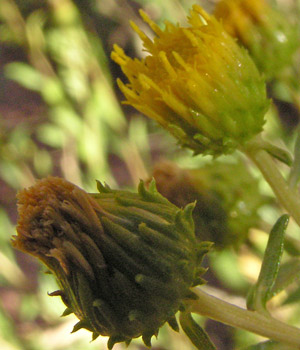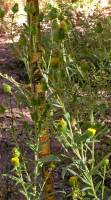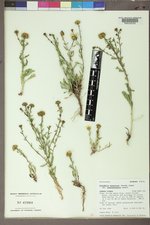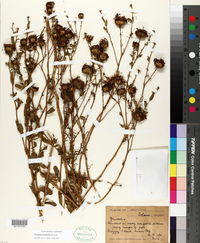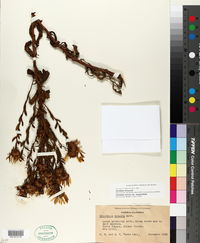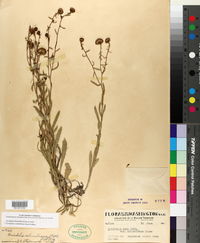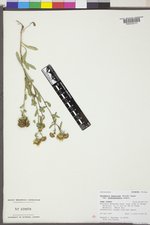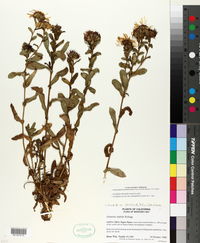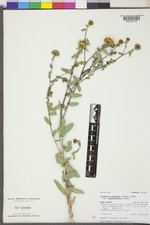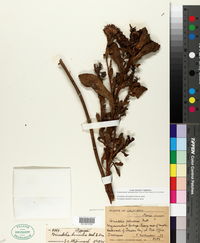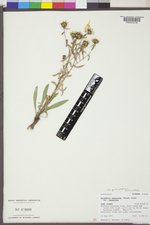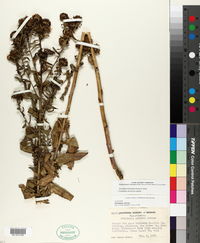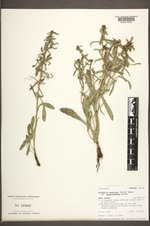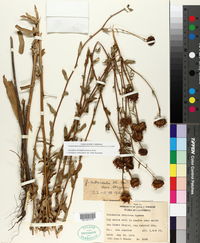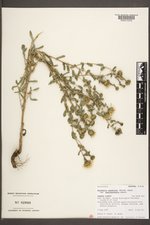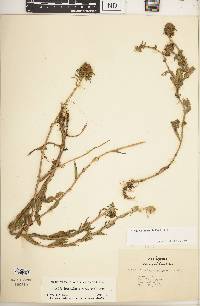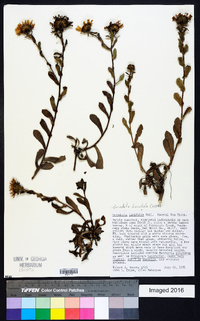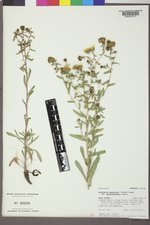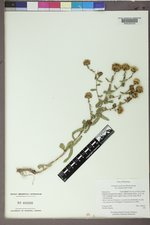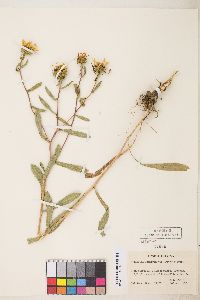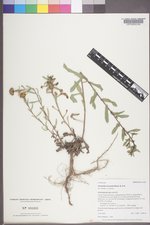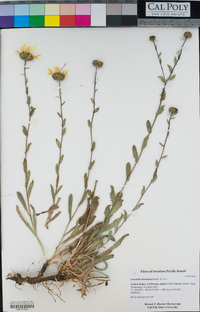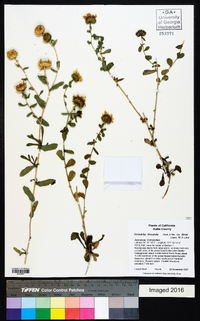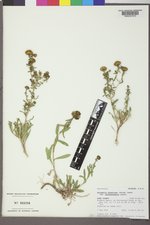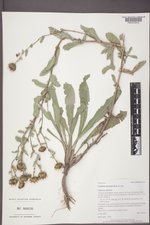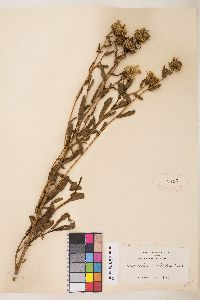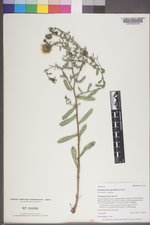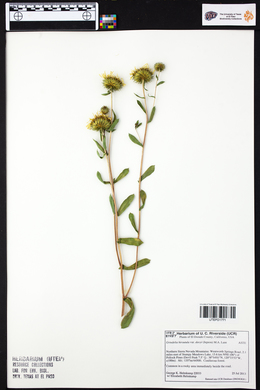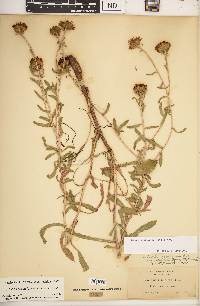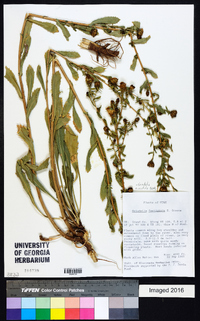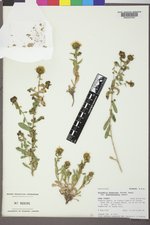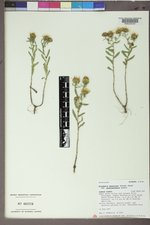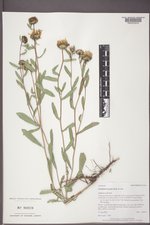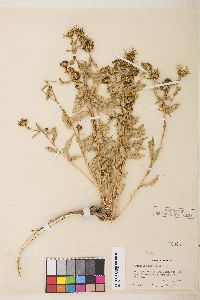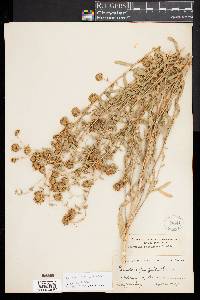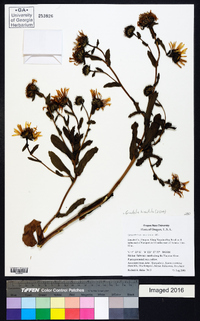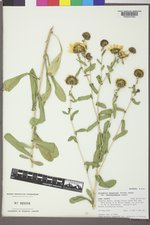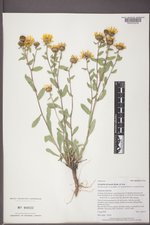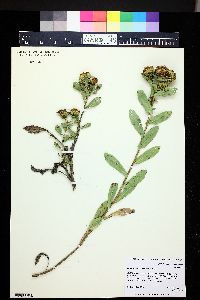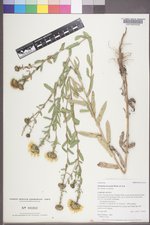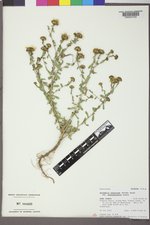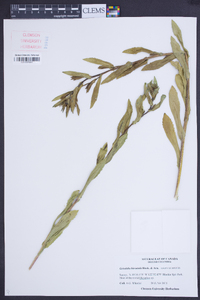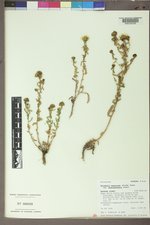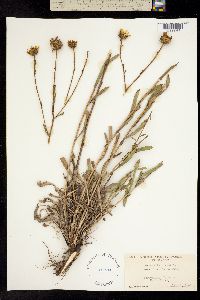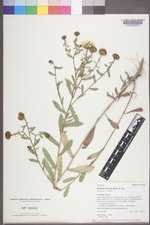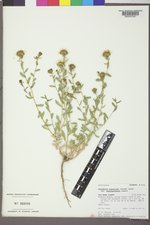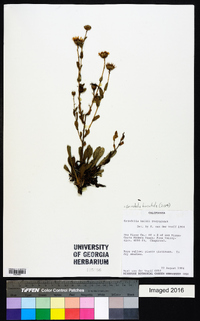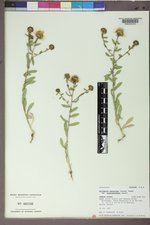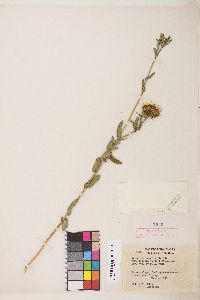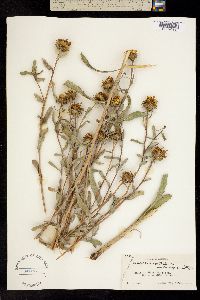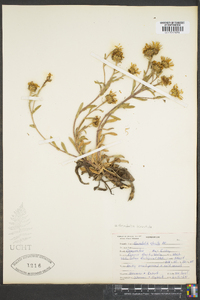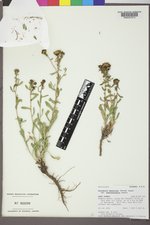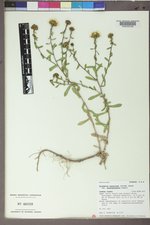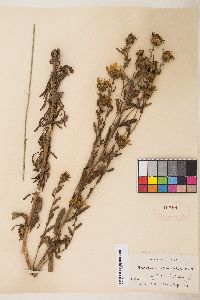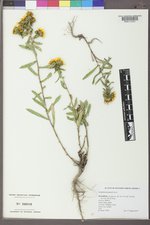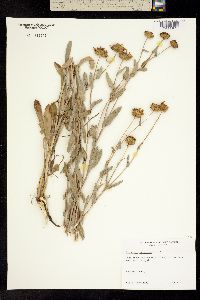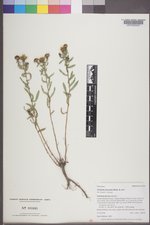Grindelia hirsutula
|
|
|
|
Family: Asteraceae
Hairy Gumweed
[Grindelia brownii, moreGrindelia camporum f. foliacea Steyerm., Grindelia collina , Grindelia humilis f. pubescens Steyerm., Grindelia integerrima , Grindelia nana f. brownii (A. Heller) Steyerm., Grindelia nana var. altissima Steyerm., Grindelia oregana subsp. wilkesiana , Grindelia patens , Grindelia robusta var. platyphylla , Grindelia robusta var. rigida A. Gray, Grindelia stricta var. aestuarina , Grindelia venulosa Jepson] |
Perennials or subshrubs (sometimes flowering first or second year), 8-60(-250+) cm. Stems usually erect, sometimes prostrate, decumbent, or ascending, usually green to stramineous, brown, or reddish, sometimes whitish, arachnose, hirsutulous, puberulous, or villous (sometimes stipitate-glandular as well), or glabrous (then often resinous). Cauline leaf blades usually oblong, oblanceolate, or spatulate (broadest at or beyond their midpoints), sometimes ovate, lanceolate, or linear, (5-)10-80(-120+) mm, lengths 2-8+ times widths, bases clasping or cuneate, margins usually serrate to dentate (teeth apiculate to setose), sometimes entire, apices truncate, rounded, or obtuse to acute, faces hirsutulous, puberulous, or villous and little, if at all, gland-dotted, or glabrous (or scabridulous near margins) and sparsely to densely gland-dotted. Heads usually in open to crowded, corymbiform to paniculiform arrays, seldom borne singly. Involucres usually broadly urceolate to globose, sometimes hemispheric, campanulate, or obconic, (6-)8-15(-20) × (6-)10-25+ mm (sometimes subtended by leaflike bracts). Phyllaries in 4-8+ series, reflexed to spreading or appressed, filiform or linear to ± lance-attenuate, lanceolate, or lance-oblong, apices usually recurved or straight, sometimes (the outer) looped to hooked or patent, terete or filiform to subulate, or acute, usually all glabrous and moderately to strongly resinous, sometimes all or outer villosulous to hirsutulous and little, if at all, resinous, seldom, if ever, stipitate-glandular. Ray florets 0 or (5-)15-60+; laminae (4-)10-25+ mm. Cypselae whitish or stramineous to brownish or grayish, (2-)4-6(-7) mm, apices usually ± knobby, sometimes coronate, rarely smooth, faces usually smooth, striate, or furrowed, rarely rugose; pappi of 2-3(-6) usually contorted or curled, sometimes straight, usually smooth, rarely barbellulate, subulate scales or setiform awns (1-)4-5(-7) mm, usually shorter than, rarely nearly equaling disc corollas. 2n = 12, 24. Flowering year round, mostly (May-)Jul-Sep(-Nov). Disturbed sites, forest openings, hillsides, prairies, roadsides, stream banks, ocean beaches and bluffs, tidal marshes, alkaline, alluvial, clay, or sand soils; 0-2800 m; Alta., B.C., Man., N.W.T., Ont., Que., Sask.; Alaska, Ariz., Calif., Colo., Idaho, Ill., Mich., Minn., Mo., Mont., Nebr., Nev., N.Mex., N.Y., N.Dak., Oreg., Pa., S.Dak., Utah, Wash., Wyo.; introduced in Mexico (Yucatan). acutifolia: Grindelia acutifolia; cauline leaf blades firmly membranous, lengths 2.5-5 times widths, phyllary apices looped to hooked, pappi of 2-3, subulate scales; southeastern Colorado, northeastern New Mexico Hybrids between G. acutifolia and G. squarrosa (as G. nuda) have been recorded from the Colorado side of Raton Pass. Occurrence of Grindelia hirsutula in Alaska was not verified for this treatment. As circumscribed here, Grindelia hirsutula includes 30 or more reputedly distinct, local, regional, or ecotypic facies that have been named at species or infraspecific rank. Locally, such facies are easily recognized; in a broad view, they intergrade with other facies and are parts of a heterogeneous continuum. Taxonomies that have attempted to recognize the facies as distinct 'taxa' have led to almost as many specimens determined as 'intermediate' as are assigned to the named 'taxa.' altissima: Grindelia nana var. altissima; distal cauline leaves smaller and more scattered than proximal, blades about as wide at bases as at mid points, heads relatively few, heights of involucres less than diams.; mostly inner coastal ranges, northern California, southern Oregon. M. A. Lane (1993b) considered altissima to apply to hybrids between davyi and nana. angusta: Grindelia inornata var. angusta; cauline leaf blades oblong to oblong-lanceolate, lengths 3+ times widths, faces inconspicuously gland-dotted, ray florets 0, cypselae stramineous to pale brown; central Colorado. angustifolia: Grindelia stricta var. angustifolia; see humilis. blakei: Grindelia stricta subsp. blakei; see humilis. bracteosa: Grindelia bracteosa; G. camporum var. bracteosa; G. robusta var. bracteosa; stems usually whitish and resinous, lengths of cauline leaf blades 3-5 times widths, phyllary apices usually looped, ray florets 0 or 2-27; southern California. M. A. Lane (1993b) suggested that bracteosa may have derived from hybridization between hirsutula and G. squarrosa (var. serrulata). See also, robusta. camporum: Grindelia camporum; stems usually whitish and resinous, cauline leaf blades ovate to lanceolate, involucres seldom subtended by bracts, phyllary apices recurved to straight, ray florets 32-39; mostly interior north, central California. columbiana: Grindelia nana [unranked] columbiana; G. columbiana; ray florets 0, otherwise much like nana; Idaho, Oregon, Washington (mostly Columbia River drainage). davyi: Grindelia camporum var. davyi; G. hirsutula var. davyi; G. robusta var. davyi; phyllary apices recurved to straight, acuminate, pappi usually ± equaling disc corollas; interior northern California. M. A. Lane (1993b) suggested that davyi may have derived from hybridization between camporum and hirsutula. fastigiata: Grindelia fastigiata; cauline |

